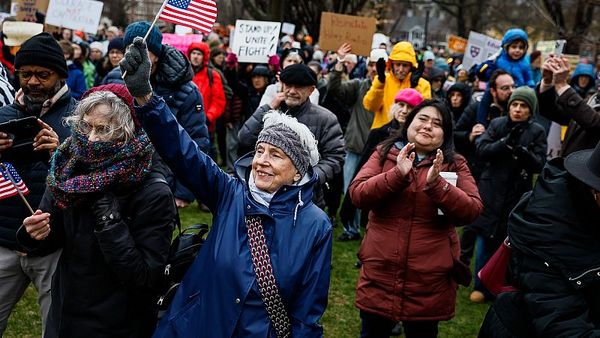
The Gouldian finch is a pint-sized bird with a rainbow presence – the life of the party when it’s able to live and fly freely. Like all else belonging to this continent and its adjacent islands, it has endured displacement and dispossession. It is now the unnecessary collateral damage of the extinction economy, as scientists continue to warn against sleepwalking across a threshold of no return.
Last week, in the middle of Naidoc Week and during the hottest week ever recorded, bulldozers began ploughing through the sacred grounds of Binybara, colloquially known as Lee Point. With the Northern Territory’s rapidly expanding military presence, Binybara is being sacrificed for defence housing.
Binybara is on Danggalaba Kulumbirigin country and is part of the broader Larrakia nation. It is a pristine and abundant biosphere that is home to more bird species than Kakadu. Many – including the mesmerising Gouldian finch – are listed as endangered species under the Environment Protection and Biodiversity Conservation (EPBC) Act.
Unlike other finches, the Gouldian lays its eggs in tree hollows. Tree hollow densities in the Northern Territory are quickly depleting due to a combination of cyclones and climate change. Now, economic development and the vast military expansion under the newly minted Aukus agreement is ravaging country and extinguishing these vital breeding habitats.
The Danggalaba Kulumbirigin peoples of the Larrakia nation have been in relationship with Binybara for millennia. Like the Gouldian finch, this is their home. Binybara is sacred. It is a living and breathing archive, which is why a cross-section of traditional owners, bird watchers, ecologists, environmental activists and lawyers and those who were a part of the mobilisation to successfully stop the Jabiluka mine, were standing shoulder to shoulder as the bulldozers and police neared.
Almost a dozen of these land defenders, including traditional owners, were arrested for protecting their country and birthrights.
The cultural heritage survey used to justify Defence Housing Australia’s (DHA) development on one of the blocks was completed by a non-Indigenous consultant in 2010 and involved a desktop analysis and a one-day field survey. Further, only 5% of the surface area of the block was visible due to heavy vegetation when the field survey was undertaken. Traditional owners, who have been in relationship with this country for tens of thousands of years, didn’t participate in the survey of their own land, even though the desktop survey suggested the existence of stone artefacts on the site.
Whilst it sounds absurd to sideline traditional owners from leading the cultural heritage surveying of their own lands, it’s not uncommon, as developers continue to commission non-Indigenous “expertise” to undertake pro-development surveys.
With Larrakia traditional owners bypassed, the second major hurdle for this Defence Housing Australia proposal was ensuring that the development didn’t detrimentally impact the region’s threatened species.
The environment minister, Tanya Plibersek, changed the original approval conditions to “better protect nature”. A day before the destruction began, she tweeted that “the plan now incorporates almost four hectares of buffer around finch habitat to protect the Gouldian finch and create a wildlife corridor”. This new plan now means that there is a 50-metre buffer around a waterhole where the birds have been spotted.
But not only do Gouldian finches require vast areas, they also require age-appropriate trees for nesting hollows. As one local resident who ventured down to stand in solidarity with traditional owners said to me, “how clever, they’ve got somewhere to drink but nowhere to live”.
In the same tweet, the minister then cited the housing crisis, saying “this will build almost 800 new homes. We need more housing for our communities, but we also have to reduce our impact and protect threatened species and the places they call home”.
Except this Defence Housing Australia development is not a typical housing project. It’s a mini-city for military personnel and their families, flush with health services, childcare centres, a school, community centre and sporting facilities. It will support the significant increase of boots on the ground as northern Australia is transformed into a larger military playground – showcasing that Australia seems more concerned about hypothetical challenges instead of the existential challenge of climate change and ecological collapse.
Plibersek’s comments are jarring, considering that one in 20 people in the Northern Territory are homeless. The overwhelming majority of these people are Indigenous – refugees on their own lands. Despite the rate being 12 times higher than the national average, the Northern Territory receives the least federal funding. Average waitlists for housing are close to ten years.
Although Labor is showing that they do know how to expeditiously build affordable housing when they want to, projects aimed at creating defence housing may not help those struggling the most with homelessness and housing insecurity.
Larrakia traditional owners have filed an emergency injunction on the grounds of protecting Aboriginal cultural heritage, successfully halting the land clearing until 17 July. The question now is whether minister Plibersek will heed the voices of traditional owners on the ground or ignore them, just like her government and their fossil fuel counterparts have done with Beetaloo, Middle Arm and Barossa?
Ben Abbatangelo is a Gunaikurnai and Wotjobaluk writer and storyteller







